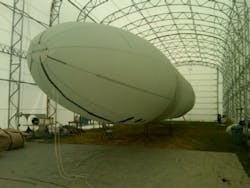NASA launches lunar Gravity Recovery and Interior Laboratory spacecraft to study moon
The distance from Earth to the moon, in a straight line, is roughly 250,000 miles (402,336 kilometers). NASA's Apollo moon crews needed approximately three days to cover that distance; yet, each spacecraft will take approximately 3.5 months and cover more than 2.5 million miles (4 million kilometers) to arrive. This low-energy trajectory results in the longer travel time. The size of the launch vehicle allows more time for spacecraft check-out and time to update plans for lunar operations. The science collection phase for GRAIL is expected to last 82 days.
"GRAIL will take lunar exploration to a new level, providing an unprecedented characterization of the moon's interior that will advance understanding of how the moon formed and evolved," says Maria Zuber, GRAIL principal investigator from the Massachusetts Institute of Technology in Cambridge, Mass.
JPL manages the GRAIL mission, which is part of the Discovery Program managed at NASA's Marshall Space Flight Center in Huntsville, Ala. Lockheed Martin Space Systems in Denver built the spacecraft. Launch management for the mission is the responsibility of NASA's Launch Services Program at the Kennedy Space Center, Florida.
